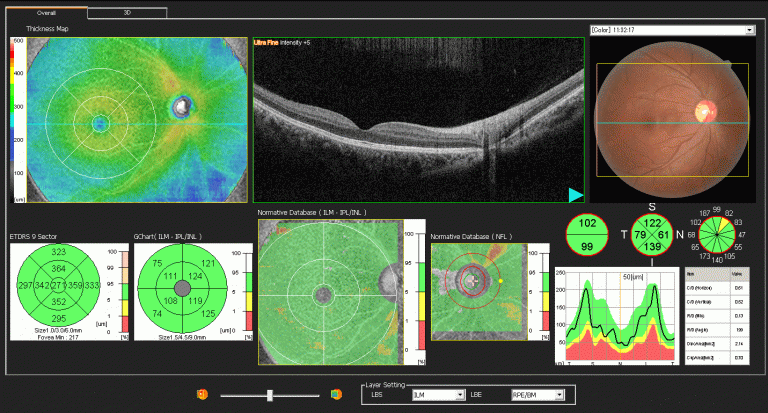As we advance in medical technology, our tools for diagnosing and managing eye health have become more refined and effective. Among these, Optical Coherence Tomography, or OCT imaging, has emerged as an invaluable resource in the eye doctor’s toolkit, especially for detecting and managing retinal diseases. This cutting-edge, non-invasive imaging technique allows eye care professionals to diagnose potentially blinding conditions long before symptoms present themselves.
Understanding OCT Imaging and Its Impact on Eye Care
Optical Coherence Tomography (OCT) operates similarly to ultrasound imaging, except that it uses light waves instead of sound waves to achieve high-resolution cross-sectional images of the retina, the layer at the back of the eye that captures light and converts it into neural signals which the brain interprets as vision. This advanced imaging capability makes OCT an essential tool in the detection of eye conditions such as macular degeneration, diabetic retinopathy, and glaucoma, which could lead to blindness if undiagnosed or untreated.
The retina is made up of several layers, each responsible for different aspects of visual function. OCT allows eye doctors to see these layers in great detail, to measure them, and to spot any changes or abnormalities. This level of detail is crucial for early detection and accurate diagnosis, setting OCT apart from other imaging methods that are less precise.

Early Detection of Disease with OCT Imaging
The primary advantage of OCT is its ability to detect eye diseases at their very early stages, even before the patient notices any symptoms. This is particularly vital for conditions like glaucoma, where irreversible vision loss can occur without any noticeable symptoms in the early stages. OCT screening identifies subtle changes in the optic nerve and retinal fiber layer that hint at the onset of glaucoma, allowing for early intervention.
Similarly, for diabetic patients, OCT can detect signs of diabetic retinopathy, where changes in blood sugar levels start to affect the blood vessels of the retina, potentially leading to blindness. Regular OCT scans can monitor these changes well before they cause significant vision impairment, allowing for timely treatment.
Monitoring and Managing Diseases with OCT Imaging
OCT is not only useful for initial diagnosis but also plays a significant role in the ongoing management of chronic eye diseases. In the case of age-related macular degeneration (AMD), OCT can monitor the health of the retina over time and detect the formation of new blood vessels under the retina or other changes that might require treatment adjustments.
For diabetic retinopathy, OCT provides detailed images that can help assess how well current treatments are working or if more aggressive treatments are necessary. It allows doctors to monitor the patient’s condition closely and tailor individual treatment plans that can prevent the disease from progressing.
The Procedure: Simple, Quick, and Painless
One of the reasons OCT has become widespread in its use is the simplicity and comfort of the screening process. The OCT machine scans one eye at a time without making contact, using light waves to create a map of the eye’s internal structure. The process is quick, taking only a few minutes per eye, and is entirely painless.
Patients do not need to prepare in any special way for an OCT exam, and there is no recovery time needed afterward. This convenience makes OCT an excellent option for routine screening, particularly for patients at high risk of eye diseases.
Schedule Your Eye Exam Today
Optical Coherence Tomography (OCT) is a cornerstone in modern eye care, providing a window into the eye’s intricate structures and offering a preemptive strike against blindness. Its non-invasive nature, combined with the critical insights it offers into the health of the retina, makes OCT an indispensable tool in the early detection, diagnosis, and management of eye diseases. As OCT technology continues to advance, its role in preserving vision and improving the quality of life for millions around the world will undoubtedly expand. Incorporating regular OCT screenings into eye care routines, particularly for individuals at risk of retinal diseases, is a proactive approach to eye health that can significantly impact overall well-being and prevent vision loss.
At Optical Illusions, we are proud to offer the most comprehensive eye exams with the most modern technology in the country. Contact our team to schedule your appointment at 1 of our 4 conveniently located offices.



